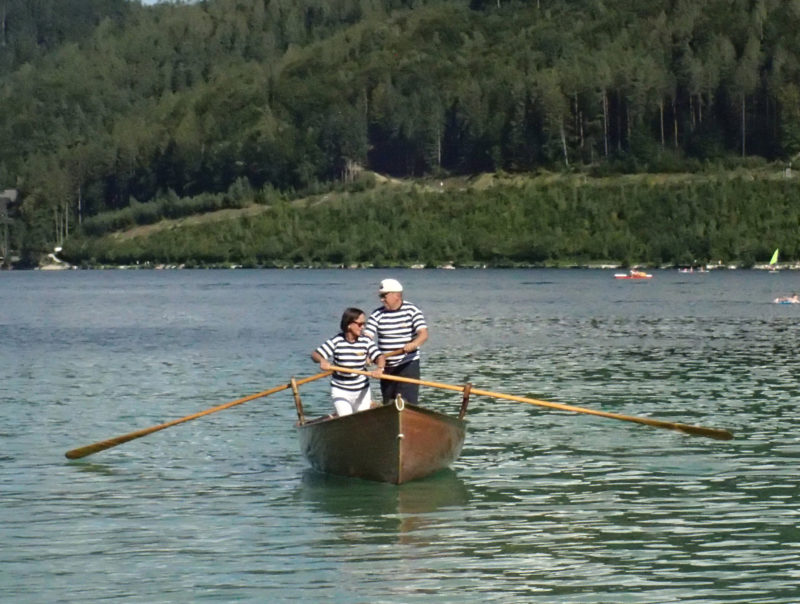 Dr.Marie Duecker
Dr.Marie DueckerDetlef Arthur Duecker, and his wife, Elisabeth, make a unique sight rowing his Dias-designed Harrier, FALCONE de PALÙ, on Lake Klopein, in the Austrian province of Carinthia. Detlef equipped the boat with Venetian oars and oarlocks made by an Italian master builder.
When Antonio Dias drew the Harrier for Ben Fuller of Cushing, Maine—a frequent contributor to Small Boats—his mission was to design a double-ender that Ben could use for camp-cruising and day use under sail and oars. Ben’s boat, christened RAN TAN, has a small outrigger set just forward and to port of the stern; it supports an oarlock that Ben uses for sculling, in lieu of a notch that a transomed boat makes possible. There’s something to be said for propelling a boat while standing up and facing forward. The view’s better, being higher above the water than while sitting, and there’s no twisting around to see where the boat’s headed. Detlef Arthur Duecker of Austria took that approach a step further when he built his Harrier.
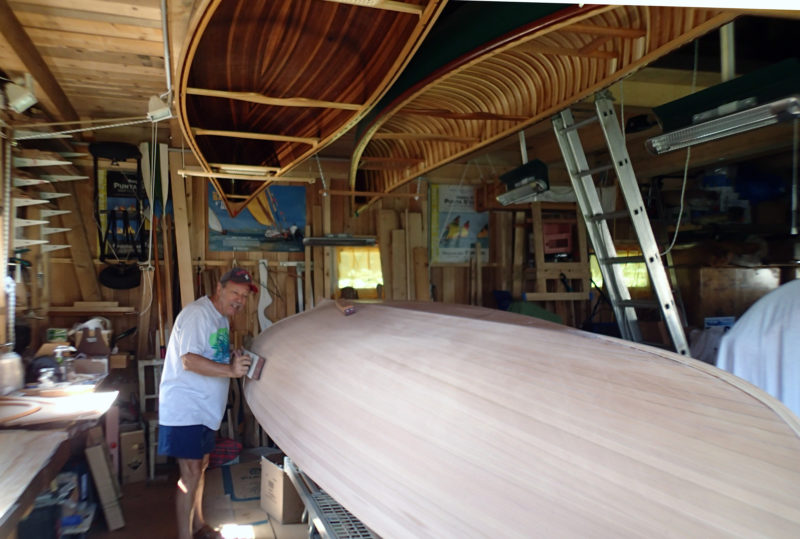 Elisabeth Duecker
Elisabeth DueckerThe Harrier was designed for lapstrake construction, but Detlef chose to strip-build his. He’d become familiar with the latter method while building the canoe seen here, suspended directly above him.
Detlef Arthur grew up in southern Austria and while he did a lot of boating on lakes and rivers, Italy’s coast was not far away and he occasionally traveled with his canoe to Venice, paddling the lagoons and canals the city is known for. The Venetian style of rowing made a lasting impression on him. The gondolas that frequent the canals of the island city are well known and perhaps the most elaborate of the rowed boats, but there is a wide range of simpler boats. To negotiate the narrow canals, the gondolas are rowed with a single oar to take up less room, but in the wide-open lagoons, workboats and racing boats are rowed with oars sticking out on either side, with one person per oar, or with a rower with two oars. The oars cross in front of the rower with the handle of the port oar going to the forward-facing rower’s right hand, and the starboard oar going to the left. The crossing of the oar handles forms a shallow V, like a valley or vale, and gives that manner of rowing its name, a la valesàna.
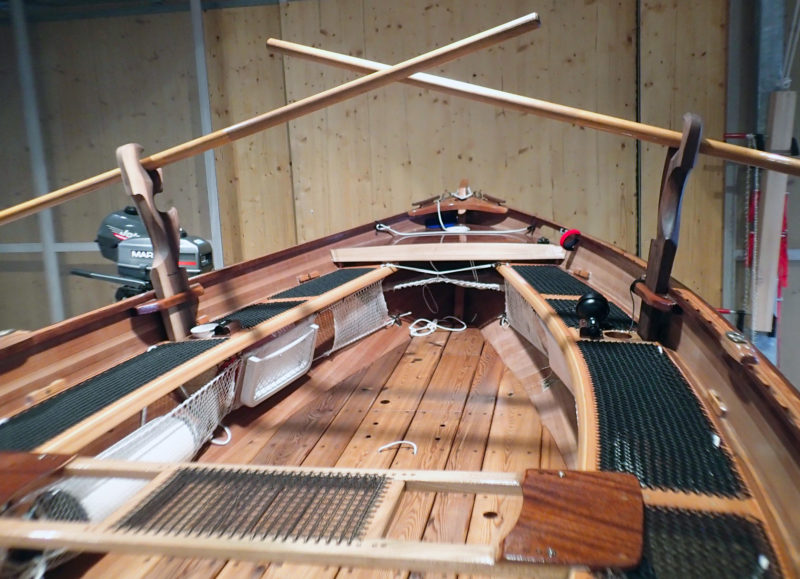 Detlef Arthur Duecker
Detlef Arthur DueckerWith both fórcole set aft, a solo rower can row with the oar handles crossed, a la valesàna.
Detlef Arthur saw a review of the Harrier, Ben’s RAN TAN in particular, in our print annual, Small Boats 2009 , and was impressed by the design. He liked the double-ender’s promise of ease in a following sea, the power of the tall, fully battened lug mainsail, and the control offered by the mizzen. Detlef Arthur had previously built a Cosine wherry, a boat designed for strip construction, and had some clear tight-grained cedar planks left over from that build. After consulting with Antonio, he set up molds and prepared to strip-plank the hull.
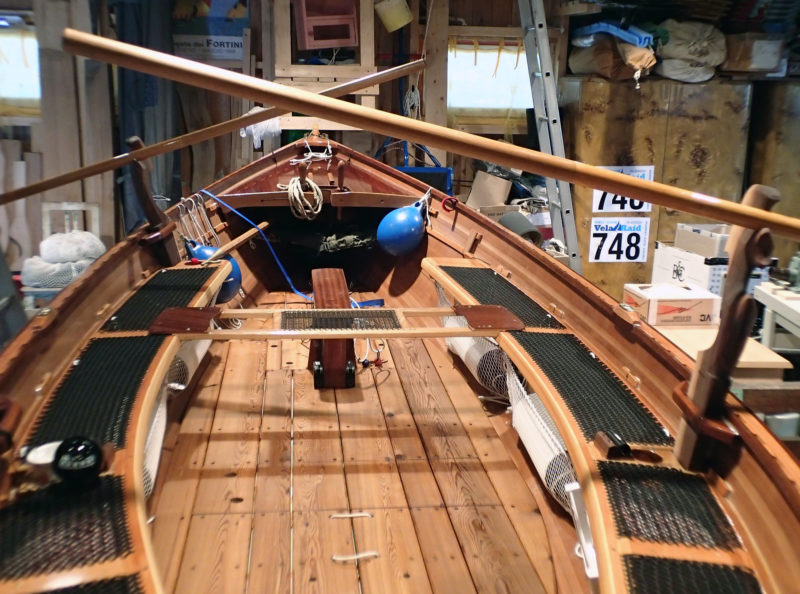 Detlef Arthur Duecker
Detlef Arthur DueckerThe boat is shown rigged for rowing by two, with the two fórcole offset in the Venetian style. The removable thwart, which is used for conventional rowing, is in place here.
When the hull was finished and ready for the interior appointments, he studied the layout of RAN TAN. She has the thwarts, stern sheets, and side benches typical of a sail-and-oar beach cruiser. Detlef Arthur had a different vision for his Harrier, a vision of Venice. The thwarts would have to go; they weren’t going to be needed for rowing in the Venetian style, and without them he’d have a clear path to move about between the helm to the mast. To keep intrusions to a minimum he switched from the long centerboard trunk that spanned the thwarts in RAN TAN to a short, self-supported daggerboard trunk. The daggerboard isn’t likely to jam after beaching or running aground, a virtue in the shallow Venetian lagoons.
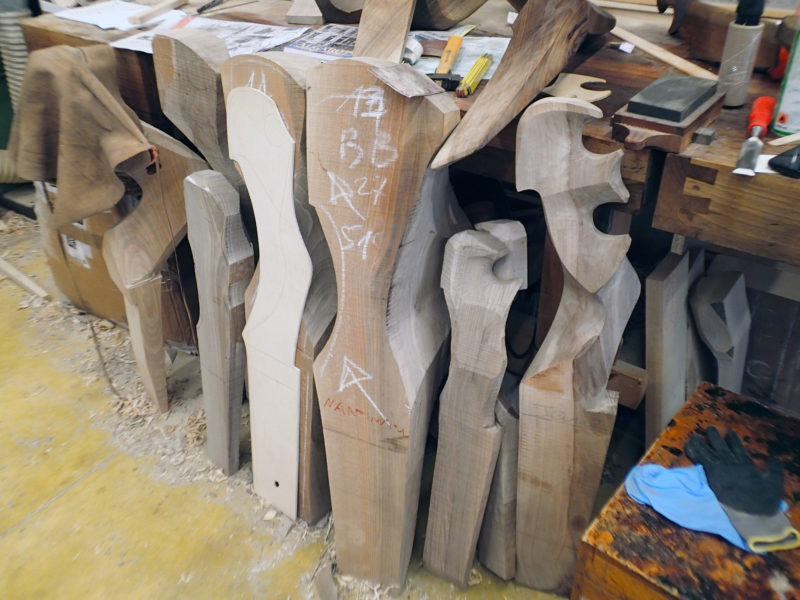 Detlef Arthur Duecker
Detlef Arthur DueckerSaverio Pastor’s shop was full of fórcole of many various types in the works.
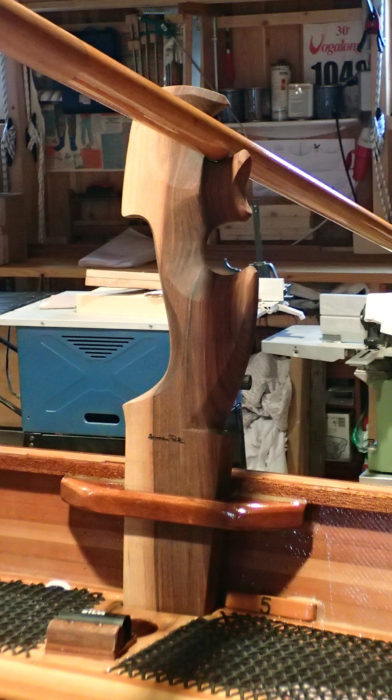 Detlef Arthur Duecker
Detlef Arthur DueckerThe oar, shown here in the aft fórcola, the fórcola da poppa, has no leather to protect it from wear. Both of Detlef’s fórcole are branded with the name of their maker, Saverio Pastor.
He kept the side benches, but instead of giving them solid wooden tops, he made them like canoe seats, with frames filled with a weave of black polyester cord—miles of the stuff—making them dry, comfortable perches for sailing.
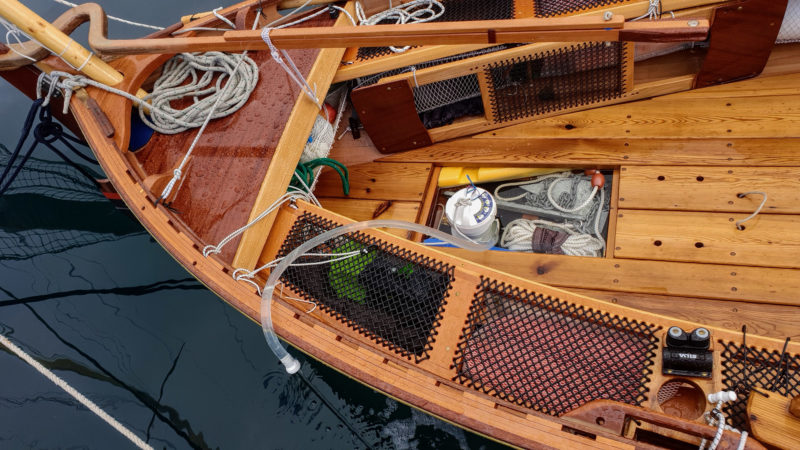 Detlef Arthur Duecker
Detlef Arthur DueckerLaced side benches offer comfortable seating, and the removable rowing thwart stows alongside the port bench.
For rowing standing up, a boat needs to offer a place to stand. For rowing a la valesàna, the rower stands in the center. With a pair of rowers, each holds a single oar, standing off-center for better span and more power: the forward rower, the provièr, to the right of center with the oar to port, and the stern rower, the popièr, to left with oar to starboard. The floorboards need to span a greater width than in a conventionally rowed boat. To get the width, Detlef Arthur had to raise the floorboards 4″ from the bottom. To provide good footing, the red-cedar floor boards are oiled rather than varnished or painted to preserve the grippy texture of the wood.
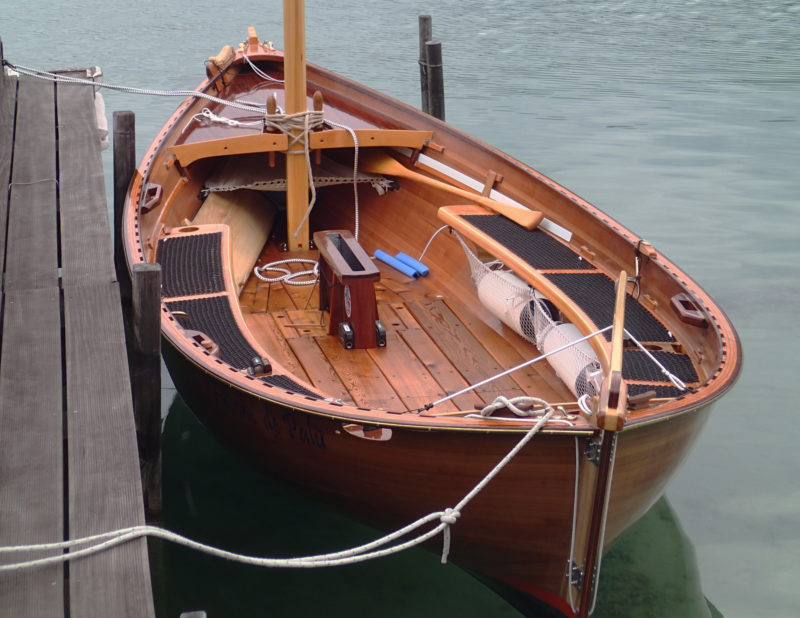 Detlef Duecker
Detlef DueckerBy doing away with the thwarts, Detef created a clear path from the tiller to the main mast. The daggerboard trunk occupies much less space than a centerboard trunk would.
Rowing in the Venetian style requires special oars, remi, with long looms and slender, slightly offset blades, and sculpted wooden oarlocks, fórcole. They can be quite simple, even crude. A remo can be made of a sapling’s trunk with a flat board nailed on as a blade, and a fórcola can be made with from a board with a couple of half-moon notches cut out. But these pieces have achieved a degree of sophistication and beauty that can humble not only simple wooden tholepins but even polished bronze oarlocks.
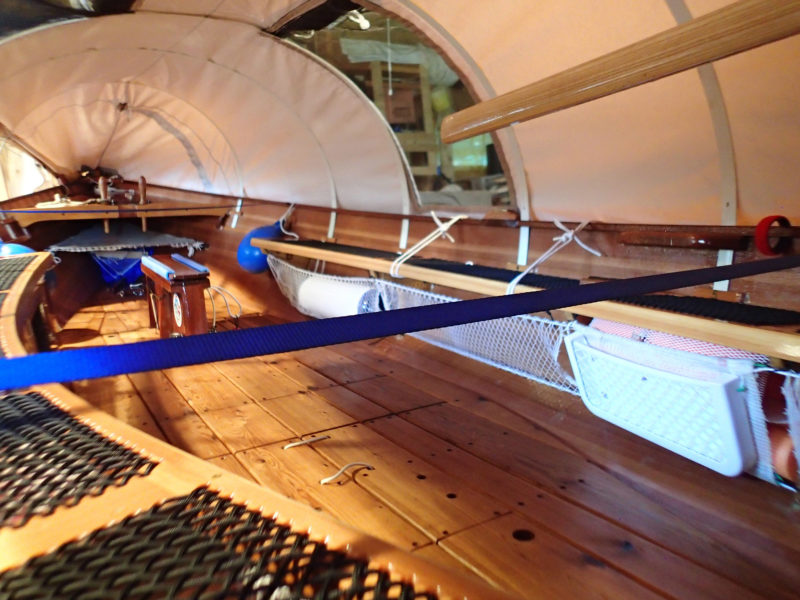 Detlef Arthur Duecker
Detlef Arthur DueckerFor camp cruising, FALCONE de PALÙ has flexible battens and a cover to provide a cozy space at anchor. The broad span of the sole, required for the Venetian rowing arrangement, makes plenty of room for sleeping.
When he traveled to Venice, Detlef Arthur often visited Saverio Pastor, Venice’s master remèr, and commissioned him make two remi and two fórcole. Pastor’s work is featured in Gilberto Penzo’s book, Forcole, Remi e Voga alla Veneta where his fórcole were photographed against a black background, removed from the context of a boatshop. It would be easy to open the book to those pages and assume you were seeing abstract sculptures in beautifully finished wood. And like works of art, the walnut fórcola made for Detlef Arthur bears the maker’s signature. The fórcola for the popièr, because it is used for most of the steering, is more complex than the fórcola in the bow. It has two notches—mòrsi, literally “bites”—in the aft edge for variations on the forward stroke, and a wide notch on the forward edge for stopping and backing. The fórcola for the provièr is a simpler device with a single mòrso, though still elegant in its form and functional. For solo rowing a la valesàna, this fórcola can be inserted in a set of sockets in the stern.
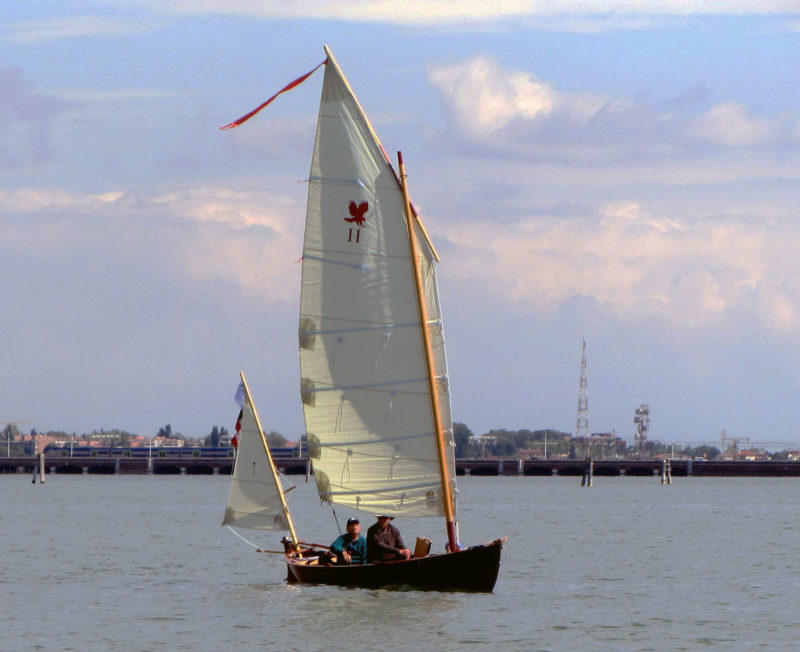 Tony Peressin
Tony PeressinThe sailing rig has a high-aspect-ratio, fully battened standing lug mainsail and a small sprit-boomed leg-o’-mutton mizzen.
The remi are 11-1/2′ long and have blades that at first glance are like elongated versions of those of beavertail canoe paddles, but in fact much more complex. Here’s how they’re described in Penzo’s book: “Venetian oars are not really so simple: the oar is not straight, nor symmetrical on any axis, and its construction requires careful observation. It can be a question of the difference of a few millimeters on an object that is four meters long.” The oars used to be made out of a single piece of beech, split out of a tree trunk to assure the shape of the oar followed the run of the grain. White ash was also used. Deltef Athur’s Pastor-built oars are made of ramin, an Indonesian hardwood, with laminates of beech in the blades.
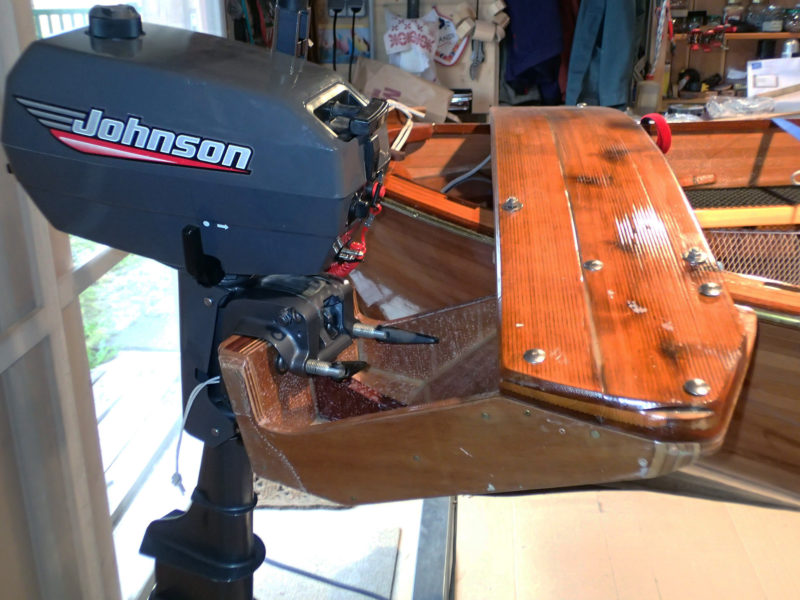 Detlef Arthur Duecker
Detlef Arthur DueckerFor outboard auxiliary power, Detlef made a bracket that spans the stern.
Detlef Arthur did make accommodations for conventional rowing, which is better suited to take on rough conditions along the coast. He mounted oarlocks amidships, made a removable footrest and a thwart with a laced-cord seat, and built a pair of 10′ spruce oars following Pete Culler’s pattern.
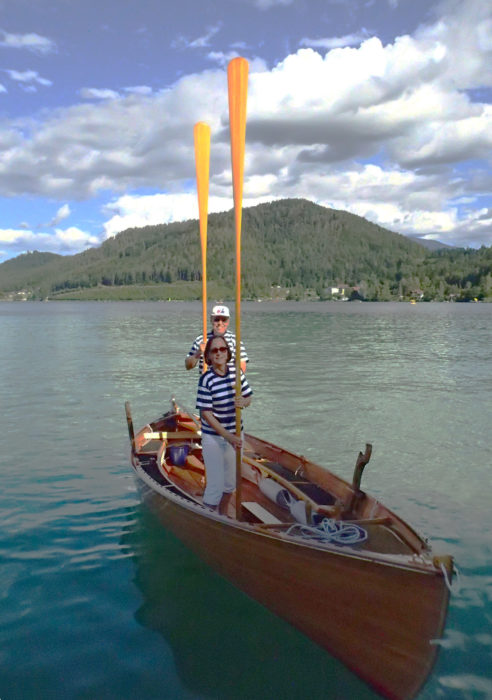 Dr.Marie Duecker
Dr.Marie DueckerElisabeth and Detlef dress the part for rowing alla Veneta, wearing the striped shirts that are commonly worn by Venetian gondoliers.
With his Harrier, christened FALCONE de PALÙ, Italian for the marsh-harrier, a bird of prey. Detlef Arthur and his wife, Elisabeth, have traveled to Venice to sail the lagoon there. Detlef Arthur has also entered the boat in numerous raids, in Venice, Piran, Izola (Slovenia), and the Barcolana Classica in Trieste, Italy. FALCONE de PALÙ may seem an unlikely mix of elements from its modernized version of a lugsail looming over seats for a canoe to the classic fórcole fixed to its strip-built hull, but in the waters around Venice, the boat never fails to draw compliments from the locals who, for centuries, have had a culture that fosters a highly refined sense of aesthetics.![]()
Do you have a boat with an interesting story? Please email us. We’d like to hear about it and share it with other Small Boats Magazine readers.
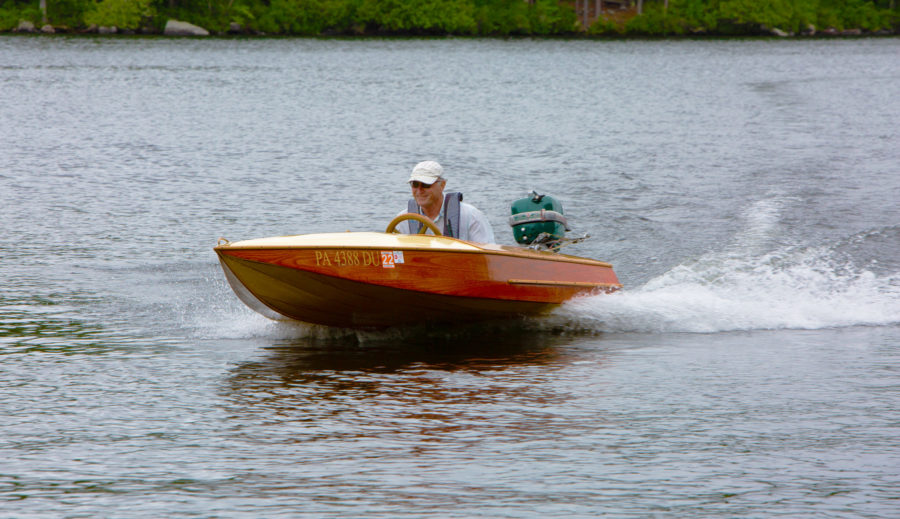
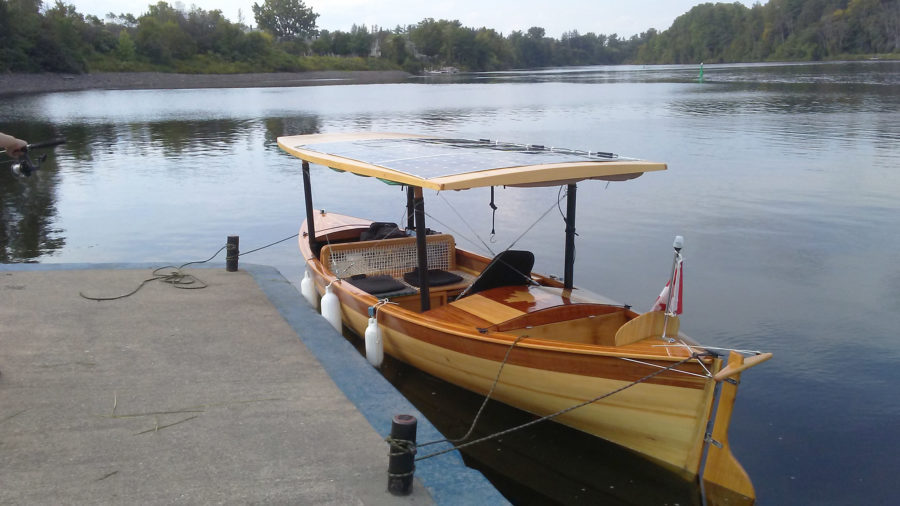
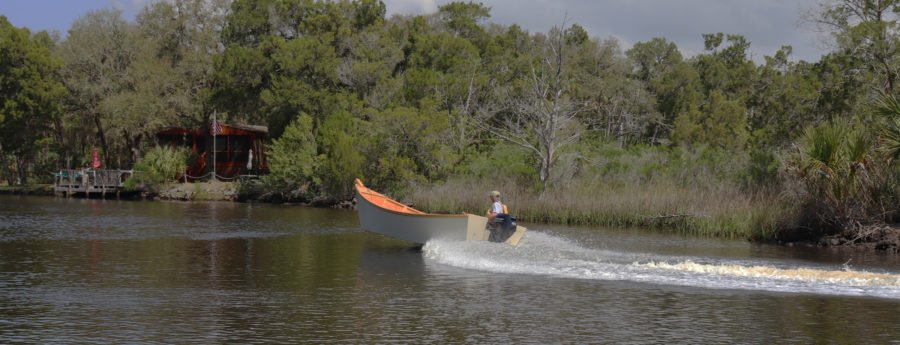
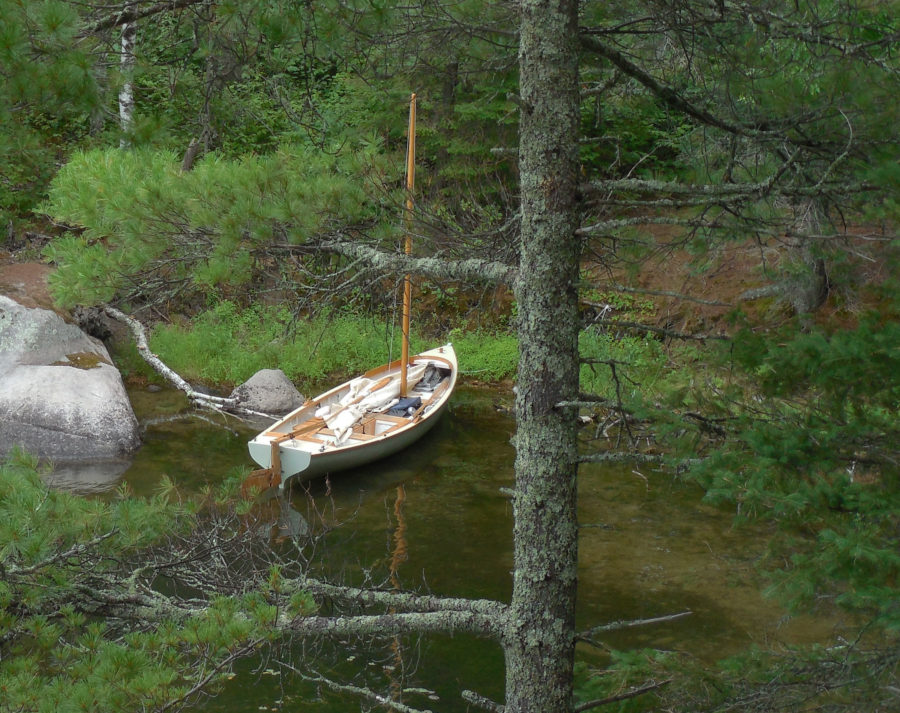
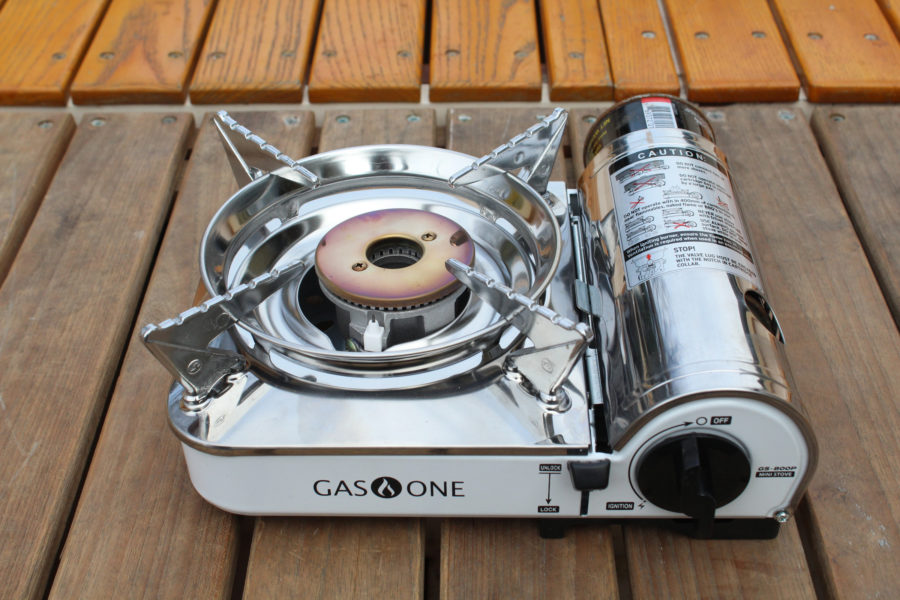
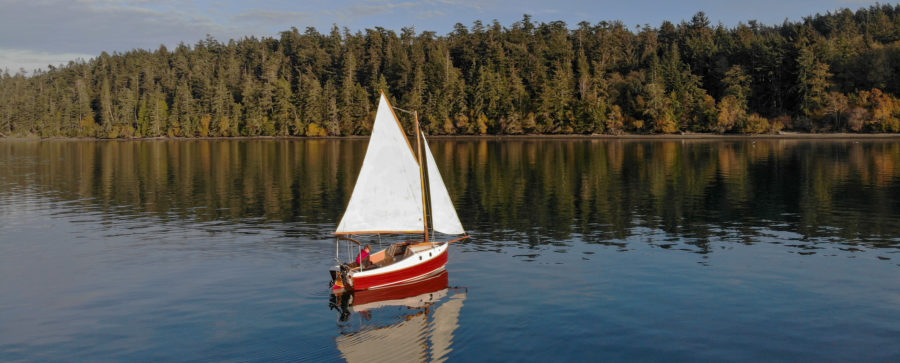


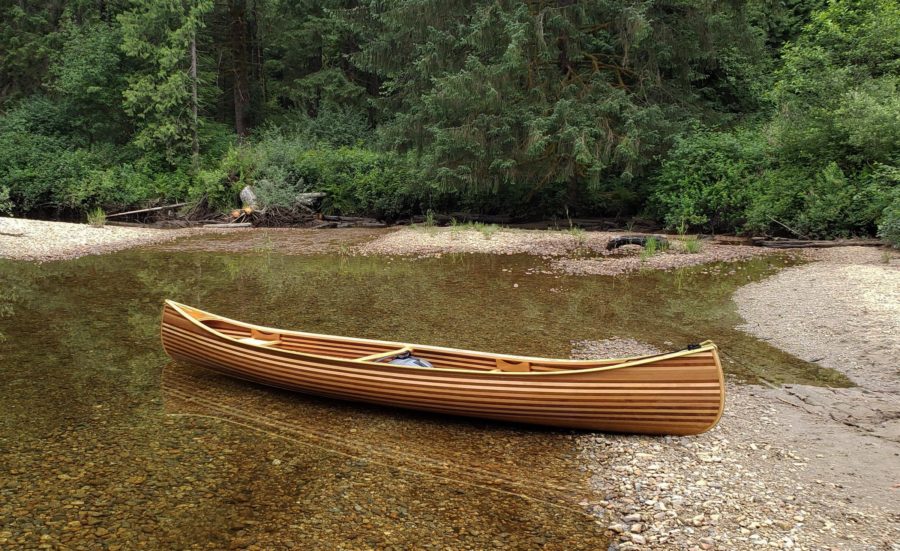

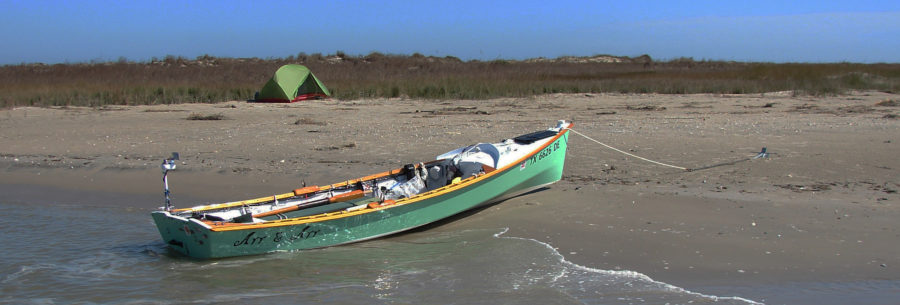
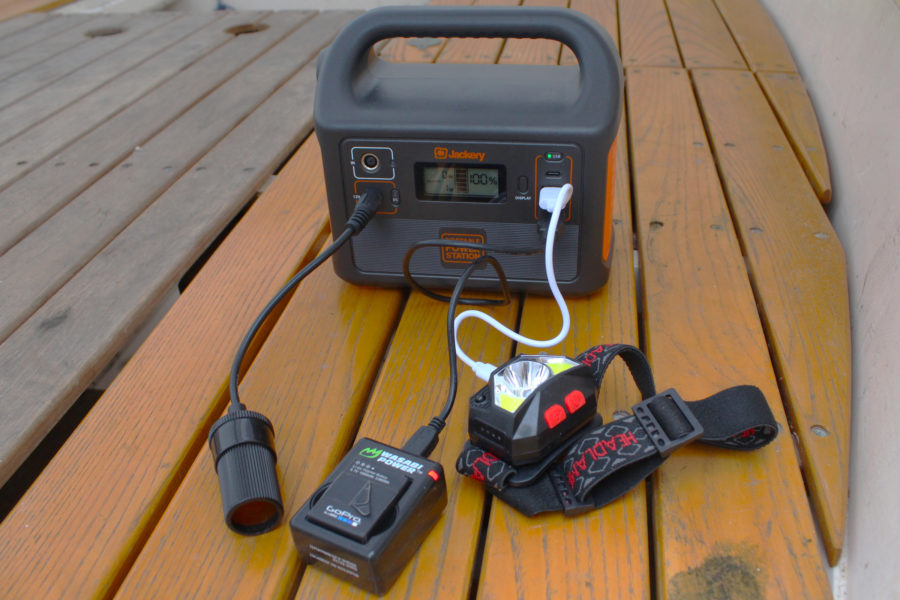

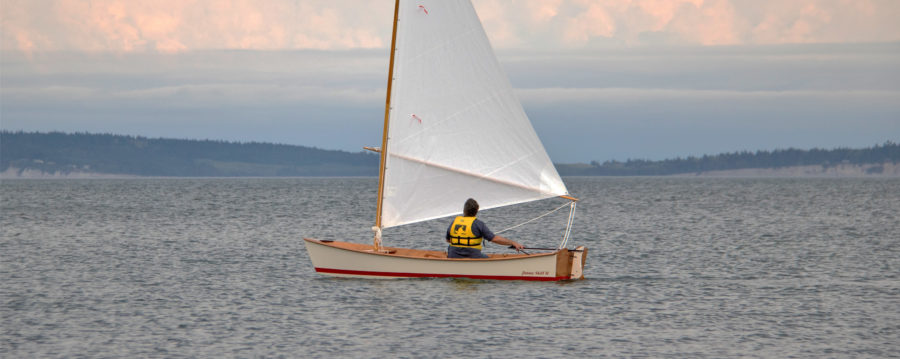
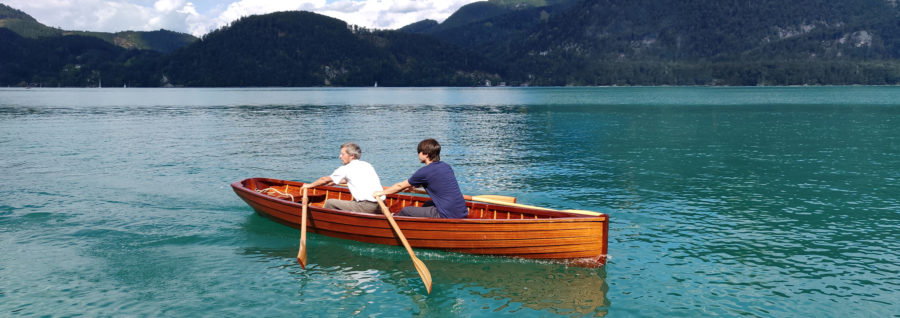
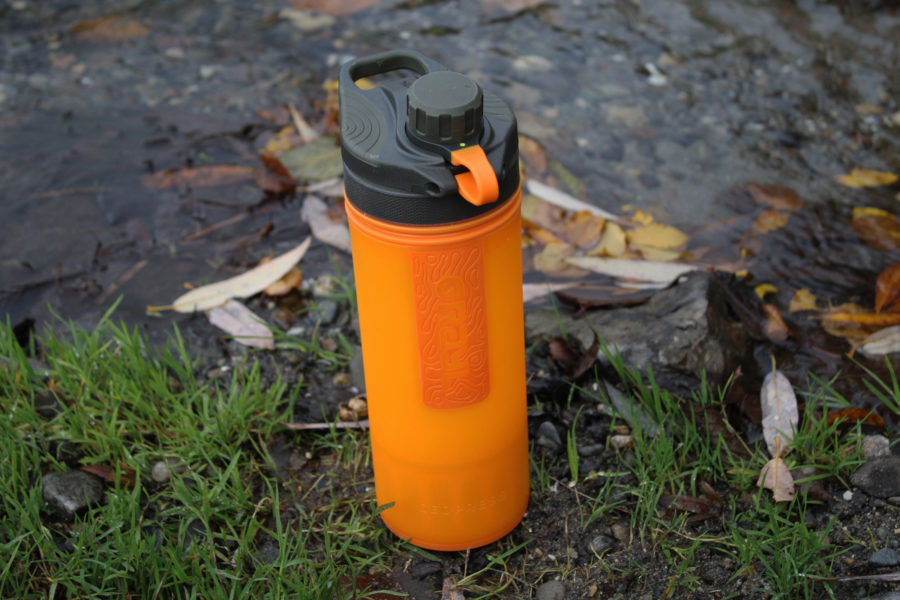
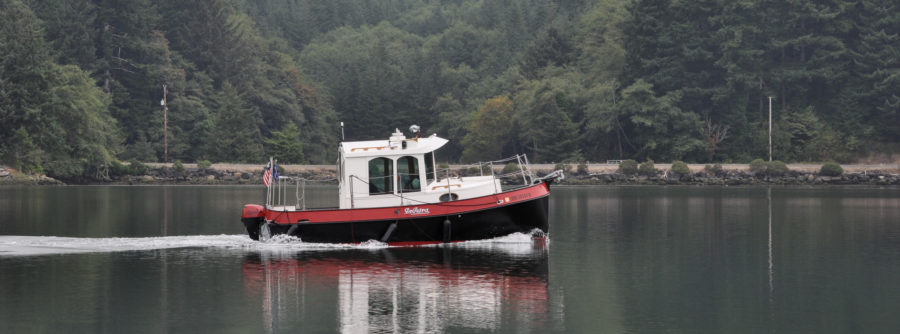
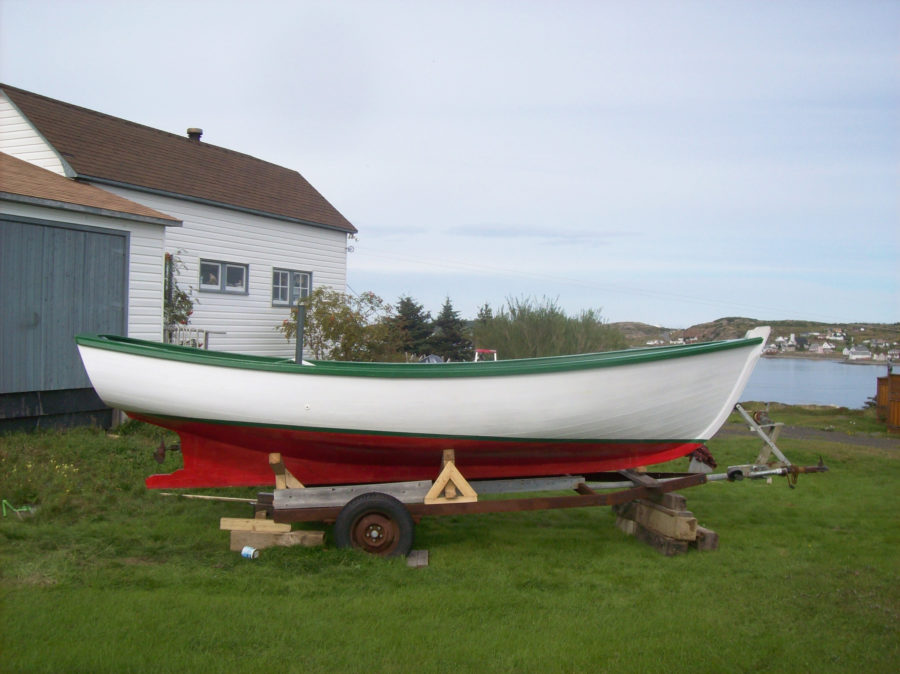
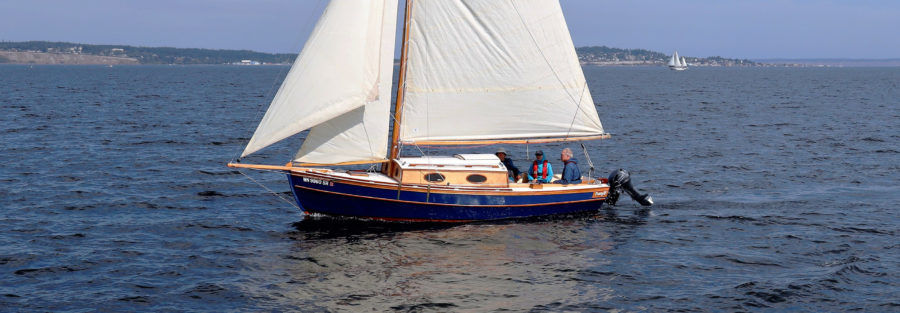
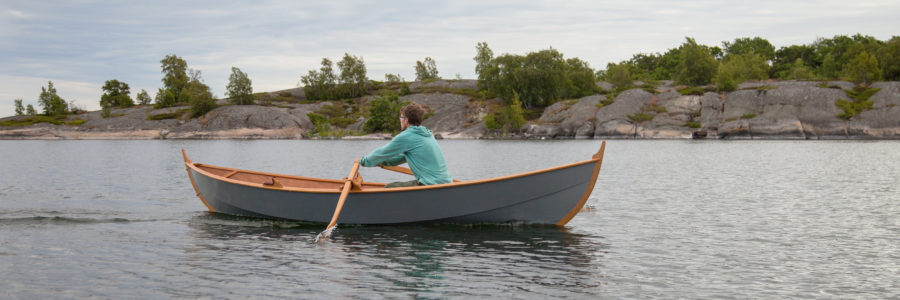

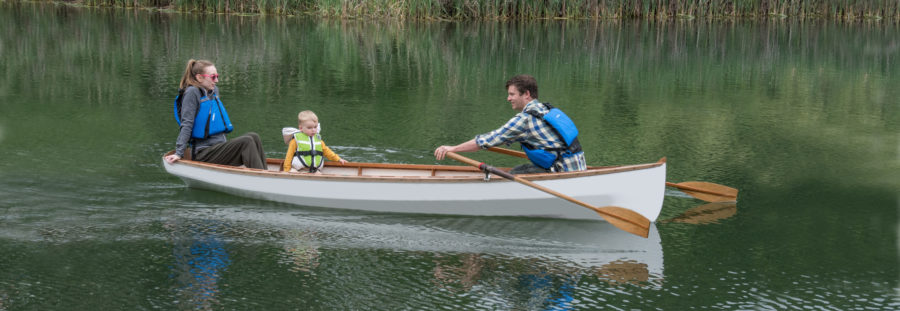
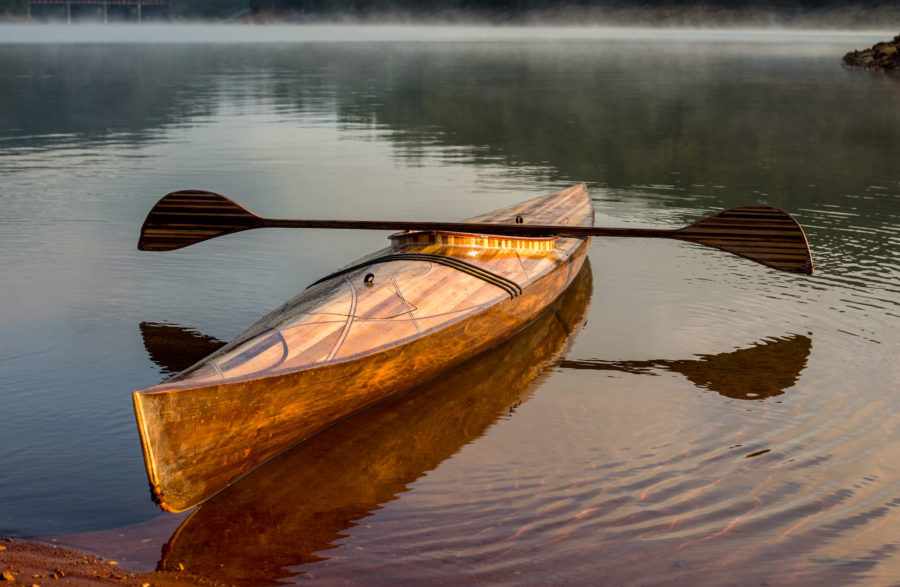

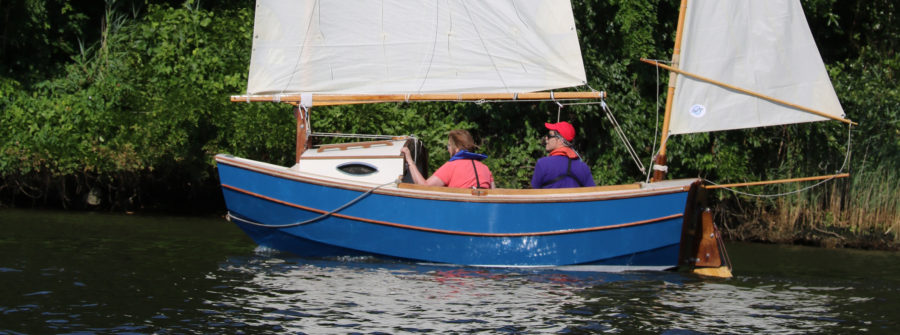
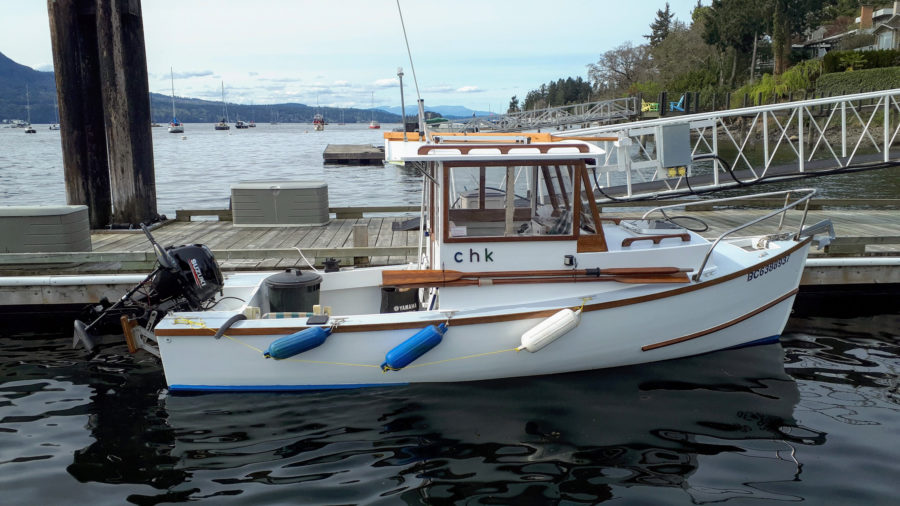
I met Arthur at Velaraid 2016 in Venice. Nice boatbuilding, greetings to Arthur and Elisabeth
(Editor’s note: Detlef’s sailing companions in Italy and on the Adriatic coast know him by his middle name, Arturo.)
Several years ago, I had some work trips that took me to the nearby Veneto region and I managed to visit Venice while I was there.
A colleague from that area rows in the Venice lagoon in the stand-up forward-facing style he learned from an 80-year lagoon boatman. Apparently not so many practice this any more so it is good to see some other people also keeping it alive.
In Venice, I too was impressed by the complexity of shapes of the forcolé.
It would be great if we could see a brief video of the two of them rowing their lovely boat in the Venetian style.
Beautiful work on this boat. I was inspired by Venetian and Vietnamese craft to build much simpler extended oarlocks for standing rowing on my Welsford Walkabout. This boat already had an open center with flat sole and removable sliding seat, so just adding the long locks at the forward of three lock locations was all that was needed. My 9′ 6″ oars work, but are improved by adding 8″ extensions as standing grips.
Compared to seated slide rowing I am not able to generate as much power standing, but the advantage of seeing forward and the ability to take a break and change the muscles used has been welcome on long trips.
There are some photos at Stand Up Rowing in my Flickr album.
How high are extensions for stand up rowing?
LOA? Beam?
The length is 17′ and the beam is 5′ 4″. You can get more information on designer Antonio Dias’ Harrier page.
Editor